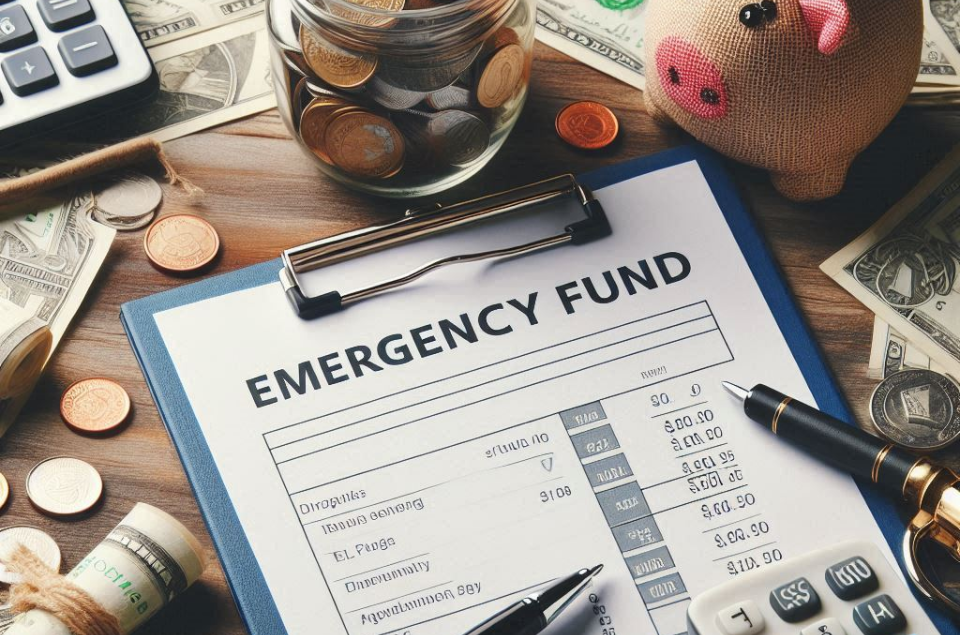
Emergency Fund Amount: How Much to Save for Financial Safety
An emergency fund is like a safety net for your money. It’s extra cash you keep to cover surprises, like medical bills or car repairs. But how much should you save? This guide will help you figure out the right emergency fund amount so you can manage your money easily and stay prepared for any surprises.
Why You Need an Emergency Fund
Before diving into how much to save, let’s understand why an emergency fund is crucial:
1. Cover Unexpected Costs
Life is full of surprises, like sudden medical bills, car repairs, or losing your job. Having an emergency fund means you’re ready for these unexpected costs and won’t be caught off guard.
2. Reduce Financial Stress
Knowing you have extra money saved for emergencies can make you feel more relaxed and less worried about your finances.
3. Avoid Debt
With an emergency fund, you won’t need to use credit cards or borrow money for sudden expenses. This helps you avoid going into debt.
How Much Should Your Emergency Fund Be?
The right amount for your emergency fund depends on your situation. Here’s a simple way to find out how much you need:
1. Calculate Your Monthly Expenses
Start by listing all your regular monthly expenses. This includes:
- Rent or Mortgage: Your monthly housing payment.
- Utilities: Bills for electricity, water, and gas.
- Groceries: Monthly cost of food and household items.
- Transportation: Car payments, fuel, or public transport costs.
- Insurance: Health, car, and home insurance premiums.
- Other Expenses: Any other regular costs like childcare or subscriptions.
2. Multiply by the Recommended Amount
Financial experts usually suggest saving enough to cover 3 to 6 months of living expenses. This means if your total monthly expenses are ₹50,000, you should aim to save between ₹1,50,000 and ₹3,00,000.
3. Adjust Based on Your Situation
Consider your unique circumstances:
- Job Security: If you have a stable job, you might be comfortable with a smaller fund. If your job is less secure, aim for the higher end of the range.
- Dependents: If you have a family or dependents, you might need a larger fund to cover their needs in an emergency.
- Debt: If you have significant debt, you might want to save more to ensure you can cover emergencies without adding to your debt.
Where to Keep Your Emergency Fund
It’s important to keep your emergency fund in a place where it’s easily accessible but not too tempting to spend. Here are some options:
- Savings Account: A regular savings account is a good choice. It’s safe and allows easy access to your money.
- High-Interest Savings Account: For a better return on your savings, consider a high-interest savings account.
- Liquid Investments: Some people use liquid investments like short-term fixed deposits or liquid mutual funds for better returns while keeping the funds accessible.
Tips for Building Your Emergency Fund
Building your emergency fund doesn’t happen overnight. Here are some tips to help you get started:
1. Set a Savings Goal
Decide on the total amount you want to save and set a target date. Break this goal into smaller, monthly savings targets.
2. Automate Your Savings
Set up automatic transfers from your checking account to your emergency fund. This ensures you’re consistently saving without having to think about it.
3. Cut Unnecessary Expenses
Look for areas where you can reduce spending and redirect that money into your emergency fund.
4. Use Windfalls
Deposit any extra money, like bonuses or tax refunds, into your emergency fund to boost your savings quickly.
5. Review Regularly
Check your emergency fund regularly to ensure it’s growing and adjust as needed based on changes in your expenses or financial situation.
Conclusion: Start Building Your Safety Net Today
Creating an emergency fund is a smart way to protect your finances. By saving enough to cover 3 to 6 months of expenses, you’ll be ready for surprises and feel less stressed about money. Start building your emergency fund amount today so you’re prepared for anything that comes your way.
